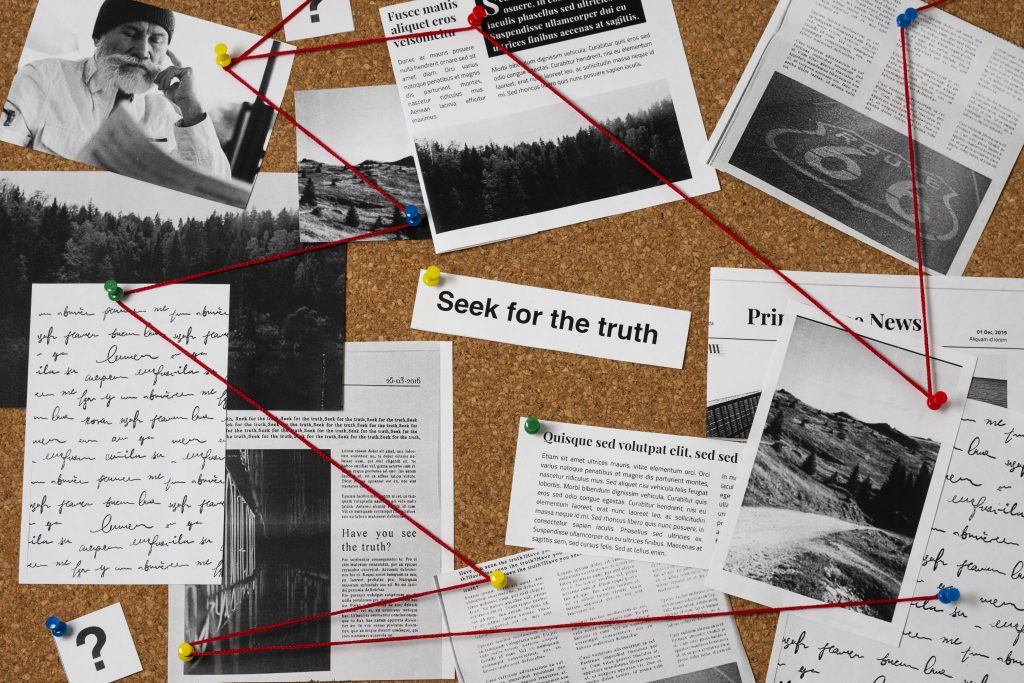In the world of innovation, the most groundbreaking ideas often come from the most unexpected places. It’s a well-known fact that creativity thrives in chaos, but did you know that cluttered ideas often carry core truths? In the pursuit of novel solutions, the messiness of initial thoughts or rough drafts can contain the seeds of brilliance. While these ideas may seem disjointed or fragmented at first, their true value is uncovered through exploration, iteration, and refinement.
From tech startups to scientific research and the arts, embracing the clutter of ideas has become a key strategy for fostering innovation. This approach is not just about tolerating chaos—it’s about recognizing that, beneath the clutter, there lies the potential for transformative change. In this article, we’ll explore how cluttered ideas lead to breakthrough innovations, why they are often the source of core truths, and how to leverage them in your own work and projects.

The Relationship Between Clutter and Innovation
1. Why Cluttered Ideas Can Lead to Breakthroughs
When we think of great innovations—whether it’s the invention of the iPhone, the discovery of penicillin, or the development of the internet—it’s easy to focus on the polished final product. However, the road to innovation is rarely a straight line. Most groundbreaking ideas start as cluttered thoughts, incomplete concepts, or even messy, unorganized scribbles. These initial stages often hold the core truths that eventually lead to something revolutionary.
- Brainstorming and Divergent Thinking: In the early stages of innovation, the goal is often to generate as many ideas as possible without worrying about their viability. This type of divergent thinking encourages the exploration of multiple avenues, even if they seem chaotic at first. In fact, chaos can stimulate creativity, helping innovators see connections that were not initially obvious.
- Messy Ideas and Relevance: The value of a cluttered idea often lies in its potential to be refined and honed. By testing, reworking, and combining elements of seemingly unrelated ideas, innovators often discover the core truth within the chaos. What might appear as a messy or impractical idea at first glance could be the foundation for a breakthrough solution.
Key Insight: Cluttered ideas often contain hidden truths—the messiness of early-stage concepts can be a breeding ground for creativity and innovation.
2. The Role of Iteration in Organizing Clutter
While initial ideas may be cluttered, the power of iteration comes into play when refining these concepts. Iteration involves repeatedly testing, adjusting, and improving an idea until it reaches its final form. This process is where the true value of cluttered thoughts is revealed.
- The Power of the First Draft: The first draft of any creative endeavor—whether it’s a business idea, a piece of writing, or a scientific theory—is often messy. But it’s through the act of revisiting and refining these drafts that the central truth or insight is uncovered. The first draft is the cluttered idea that contains the kernel of the finished product.
- Learning from Failure: In many cases, failure or dead ends are part of the iterative process. When things don’t work out, it’s an opportunity to step back, analyze what went wrong, and adjust the approach. Often, failure uncovers truths that would not have been discovered through a more linear or “tidy” process.
Key Insight: Iteration transforms cluttered ideas into innovative solutions by refining them over time through testing, adjustment, and learning from failure.
Embracing the Clutter in Creative Processes
3. How Creativity Thrives in Chaos
In the creative fields, clutter is often celebrated as a source of inspiration. Whether it’s in writing, design, or art, messy ideas are often the spark for something truly unique.
- Writers and Their First Drafts: Writers often produce a messy first draft filled with incoherent ideas, rough sentences, and rambling thoughts. Yet, this clutter forms the foundation of their work, which, after multiple revisions, becomes a clear and concise narrative. The cluttered draft holds the raw material for the final piece, capturing the essence of the writer’s voice and creativity.
- Design and Innovation: In the world of design, initial sketches or concepts may appear cluttered and disorganized. Designers often start with a flurry of ideas, using the creative chaos to explore different options before narrowing down to the best solution. These early stages of ideation often hold the seeds of innovative designs that push boundaries.
Key Insight: Creative processes benefit from the clutter—messy ideas allow for the exploration of different perspectives, resulting in more innovative and unique outcomes.
4. The Importance of an Open Mind
To fully harness the potential of cluttered ideas, it’s crucial to approach them with an open mind. Flexibility and the willingness to embrace uncertainty can help reveal the core truths hidden within a chaotic array of thoughts and concepts.
- Encouraging Open Exploration: Embracing a mindset of exploration rather than perfection allows for a more open and flexible approach to idea generation. When we allow ourselves to explore without judgment, we increase the likelihood of uncovering valuable insights.
- Cross-Pollination of Ideas: When different fields, industries, or disciplines collide, the combination of diverse, often messy ideas can lead to entirely new innovations. For example, many breakthrough technologies have emerged from the intersection of fields such as biology, engineering, and computing. These seemingly unrelated ideas come together in ways that would not be possible without the clutter of diverse thought.
Key Insight: An open mindset allows us to embrace messy ideas and uncover innovative solutions by allowing for the free flow of thoughts and concepts.
Real-World Examples of Cluttered Ideas Leading to Core Truths
5. Innovations Born From Messy Beginnings
Some of the world’s greatest innovations started as cluttered, unrefined ideas. Here are a few examples of how cluttered ideas eventually led to core truths and groundbreaking discoveries:
- The Development of the Internet: The creation of the internet was a messy process filled with trial and error. Early ideas about interconnected networks were unstructured and chaotic. However, through continuous refinement and iteration, the core truth about the potential of global connectivity emerged, changing the world forever.
- The Theory of Evolution: Charles Darwin’s ideas on evolution were initially based on a mix of observations, speculations, and theories. Over time, through repeated study and the development of supporting evidence, the cluttered ideas about natural selection coalesced into a cohesive and revolutionary theory.
- The Invention of the Lightbulb: Thomas Edison’s journey to invent the lightbulb was filled with failures, dead ends, and cluttered ideas. But each failure led to a deeper understanding, ultimately resulting in the core truth about how to make electric light reliable and practical.
Key Insight: Many of the world’s greatest innovations emerged from cluttered ideas, which, through persistence and iteration, revealed core truths that changed industries and societies.
How to Leverage Cluttered Ideas for Success
6. Tips for Embracing Cluttered Ideas
To make the most of cluttered ideas and uncover the core truths within them, here are a few strategies you can implement in your creative or professional work:
- Don’t Rush to Edit: In the early stages of ideation, focus on generating as many ideas as possible without worrying about their quality. Let the clutter accumulate, and worry about refining it later.
- Create Space for Exploration: Dedicate time for brainstorming and idea generation without constraints. Allow your thoughts to wander and explore different possibilities, even if they seem chaotic at first.
- Iterate and Refine: Revisit your ideas regularly, iterating on them based on feedback and further exploration. Over time, the clutter will clear, and the core truths will emerge.
Key Insight: Embrace the messiness of early ideas and give yourself permission to explore without judgment. Iteration and refinement will help uncover the core truths that lead to innovation.
Conclusion
The phrase “cluttered ideas often carry core truths” reflects the messy but essential nature of creativity and innovation. While our thoughts and ideas may start out chaotic and fragmented, they often hold the seeds of brilliance. Through iteration, exploration, and an open mindset, we can refine these ideas into meaningful innovations that shape the future.
Whether you’re an entrepreneur, artist, scientist, or writer, understanding that messy ideas lead to discoveries is key to unlocking new possibilities and fostering long-term success. Embrace the clutter, and let your ideas evolve into something truly transformative.
Reference
- Guilford, J. P. (1950). Creativity. American Psychologist, 5(9), 444–454. https://doi.org
- Wang, J., & Minda, J. P. (2021). Spoken versus typed long-form writing: Effects on length and fluency. Computers in Human Behavior, 121, 106809. https://doi.org
- Vartanian, O. (2009). Variable attention and creativity: Insights from neuroscience. Psychology of Aesthetics, Creativity, and the Arts, 3(2), 57–60. https://doi.org









